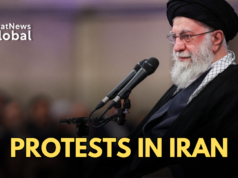Almost two decades after the Nathu La incident, China was irked by the certainty that the Union Territory of Arunachal Pradesh—which they claimed large portions of—would become the twenty-fourth state of the Indian Union. Chinese troops encroached into Indian territory in Arunachal Pradesh in late June 1986 and set up a camp. The area of dispute was a grazing ground north of Tawang at Wangdung on the Sumdorong Chu rivulet. It was a remote and inaccessible valley not far from the infamous Namka Chu of 1962. Wangdung was literally a ‘no-go’ area till then for the Indian Army, as patrolling the area constituted a provocation.
Angered that Wangdung was being used by Indians during the summer, the Chinese rapidly built a post in the area and, in a first, used helicopters to stock the post. India’s response was swift and deliberate under the leadership of its army chief, General Sundarji, and two exceptional field commanders—Lieutenant General N.S. Narahari, the corps commander of 4 Corps, and Major General J.M. ‘Jimmy’ Singh, the divisional commander of 5 Mountain Division at Tenga. Jimmy Singh’s recollections of the face-off are remarkable. He clearly remembers that the Limits of Patrolling (LOP) laid down for the Indian Army in the early 1980s stopped short of all disputed areas. He also recollects the winds of change that had started blowing in 1982, when Indira Gandhi gave the go-ahead for Operation Faulad in the Tawang Sector. The operation was a modestly calibrated move to build adequate infrastructure to support a limited forward posture by the Indian Army against Chinese attempts to make inroads into disputed areas along the LAC.
5 Mountain Division was still defending the main ingress route that the PLA had employed in 1962—from Bum La to Tawang. It also held the Tawang Garrison with one mountain brigade. Construction of permanent defences for the deployment of the remaining division at Tenga began in 1983. Work had continued during 1984 and 1985 and was ongoing when Jimmy Singh took over command of the division. He recalls that the Sumdorong Chu Valley, which lay forward of the LOP, was ‘disputed’ at the time and was uninhabited. However, Chinese patrols had been visiting Wangdung every year since 1980, as yak grazers from both sides used several grazing grounds in the Valley. In 1982, after a Survey of India team confirmed that Wangdung was on the Indian side of the LAC, a seasonal Subsidiary Intelligence Bureau (SIB) was set up there in the summer of 1984 to watch, inform and run a covert transborder network of sources. In the summer of 1986, the SIB’s role in alerting the Indian Army to increased Chinese presence would prove timely and critical.
Irritated by the earlier presence of the SIB, the Chinese increased their patrols in May-June 1986. They commenced some track-building activity in Sumdorong Chu Valley before the seasonal SIB post was set up. Not wanting to unnecessarily provoke the Chinese, the SIB—who were not under Jimmy’s command—did not revive their Wangdung Post in 1986. Alerted by some local grazers and the SIB, the Indian Army also discovered tell-tale signs of Chinese patrolling around Lungro La, a pass which offered access into the Sumdorong Chu valley from the Indian side. This was alarming as Lungro La offered ingress routes that could threaten Tawang’s defences from the northwest, an area that was not defended as it was beyond the LOP. The saving grace was that Khypo—a high feature which overlooked Lungro La—was defended by the Assam Rifles. Wangdung lay right at the bottom of a steep approach to the Sumdorong Chu Valley and would be tactically indefensible if the surrounding slopes were held by the Chinese.
On 23 June, when the Indian Army had still not moved forward, the SIB reported that the Chinese were in the process of establishing a large camp at Wangdung. Though the information was unverified, Jimmy immediately ordered the occupation of Lungro La by a protective patrol. He gave the patrol commander discretion to open fire with small arms if the Chinese approached the pass. He also ordered the deployment of 81mm infantry mortars to provide fire support. Though he readied one Infantry battalion to move to Lungro La—which was fifteen kilometres from the nearest roadhead—a track to facilitate the deployment of field artillery guns still needed to be laid. Work commenced in early July without the approval of the command headquarters in Kolkata. Infantrymen doubled up as porters and mule convoys were used for ferrying building materials. An army officer was embedded with the Assam Rifles at Khypo to act as the division’s forward intelligence input. As anticipated, a Chinese patrol soon came up to Lungro La. They retreated when challenged by the Indian troops deployed there.
In August 1986, the surveillance officer at Khypo reported a stream of Chinese helicopters flying into Wangdung despite inclement weather. Jimmy was not aware of the existence of a helipad at Wangdung, and after grilling the officer and other witnesses on the phone, he accepted the information as verified. As his Corps Commander, General Narahari, was on leave and everyone up the chain of command was dithering on the immediate action to be taken, Jimmy ordered an acclimatized Infantry company to reinforce Lungro La supported by fighting porters and mules. They were deployed within twelve hours.
Jimmy assumed responsibility for deploying troops across the LOP (called ‘Laxman Rekha’ by the troops) because his operational orders directed that he defend Indian territory and Tawang. He says that he was convinced that he would be failing in his task if he did not take timely action to prevent the Chinese from occupying the tactical ground that extended from Lungro La to Khypo—even if it meant marginally transgressing the LOP. ‘History was staring at me in the face,’ he says, ‘and I had to cater for a worst-case scenario that could lead again to the capture of Tawang.’ Narahari’s operational orientation had the hallmark of his engineering expertise, and this was leveraged fully by Jimmy. This ensured that within three months a thirteen-kilometre long class 9 operational track to the base of Lungro La was complete. Available engineering expertise and explosives were used to construct tracks, with the manual work being done by the infantry. A battery of 105mm Indian Field Guns (IFGs) was also deployed.
Instead of commending the initiative shown by their field commanders, the reaction from higher authorities was not encouraging. Narahari and Jimmy were advised not to provoke the Chinese, cross the LAC or open fire. The existing orders authorized the divisional commander only the use of small arms, machine guns and infantry mortars, while the corps commander had the authority to use Artillery. This mandate remained unchanged despite the gravity of the situation. Despite the operational diffidence displayed by higher formations, Jimmy wanted to firm up his operational strategy before the winter set in and visited the entire deployment along with Narahari before the snow came in. Narahari then sent a personal message to Sundarji, who visited Tawang in the first week of October for a briefing and operational discussion. Jimmy commenced the most important briefing of his career by emphasizing that despite Operation Faulad, only one of his three mountain brigades was garrisoned at Tawang and another battalion covered the Bumla Axis. The battalion was modestly supported by short-range artillery guns, a company of engineers and signal and logistic components. With forward divisional defences coming up at a very slow pace, the rest of the division was at Tenga. The existing operational philosophy was to have a first line of robust defence along the Sela Ridge, well to the south of Tawang. He then argued that he may not be able to defend Tawang with the existing positions.
Sundarji responded by declaring, ‘Then I will sack you.’ Narahari requested Sundarji to hear Jimmy out who then outlined the aims of the division: to prevent intrusion, improve defences in case of a full-scale war and assert India’s claim along the McMahon line. Sundarji said, ‘You are the divisional commander. Who is stopping you? Why don’t you go forward?’ Jimmy replied, ‘I do not have any roads. I would require more than 1,200 mules just to maintain the force level, as also longer-range artillery to support Zimithang sector. I will not deploy troops in a forward position unless I can provide them with artillery support.’ Narahari added that it would also take a long time to build up, to which Sundarji responded, ‘Why are we talking about mules in this era? Let’s talk about helicopters.’
General V.N. Sharma, who took over as the army chief from Sundarji, was at that time the commandant of the College of Combat in Mhow. He recollects flying down to the area and reconnoitring it as a precursor to an exercise that he was planning at Mhow. Clearly supportive of the initiative taken by Jimmy and Narahari, he advised them to hold firm. Little did he know that he would soon come in as the army commander of Eastern Command and oversee the final phase of the crisis.
Not satisfied with occupying the Lungro La–Khypo Ridge, Jimmy shifted his attention to the Zimithang Sector. He had another battalion occupy the Hathung La Ridge that overlooks the Namka Chu Valley, where Indian posts had been destroyed by the Chinese in 1962. This was followed by aggressive patrolling of the Namka Chu Valley and the blocking of the southern approaches by another Infantry battalion. All forward deployments in the area were carried out on foot on a man-pack basis, with Mi-17 helipads constructed within twenty-four hours to enable air-landed build-up. Maintenance by paradrops and free-drops from helicopters was kept as a standby option. The Mi-8s and Mi-17s landed on the quickly-built helipads made of corrugated galvanized iron sheets. Mule tracks were then developed to ensure routine maintenance and water supply, which freed up the helicopters for more important tasks such as the moving of dismantled artillery guns, mortars and ammunition stocks.
(Excerpted with permission from the book ‘Full Spectrum: India’s Wars, 1972-2020’ by Arjun Subramaniam.)




